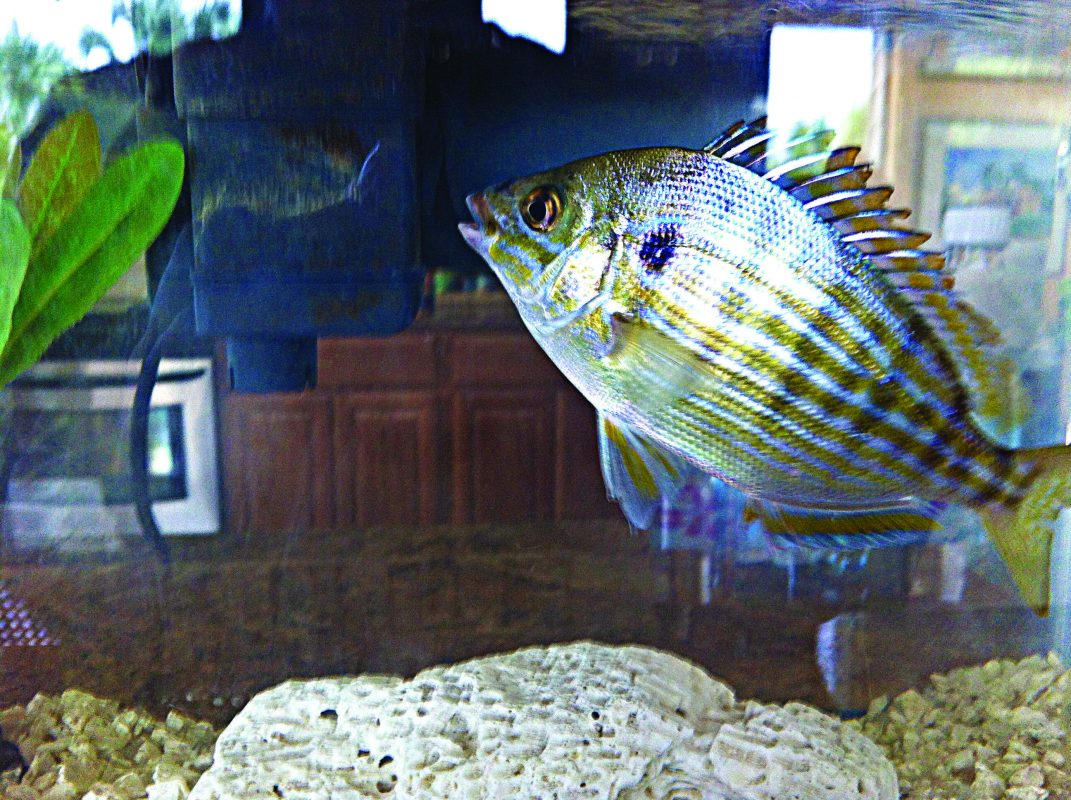
The Mighty Pinfish: A Major Player In Our Estuaries
Dr. Bob Shipp
Most of us are very familiar with pinfish. They abound in our shallow water grass flats, as well as around pilings and over oyster reefs on the Atlantic coast, in the Gulf of Mexico and the Caribbean. Where I am, in the northern Gulf of Mexico, they show up in early spring, and leave in late fall when the weather dictates.
But where do they come from in the spring, and where do they move to when the cold fronts move in? The answer most of us would offer would be correct: offshore. But there’s a lot more to it than that. Although we only see the juveniles in the bays and sounds, these guys live several years and get surprisingly big. The big adults may top 3 pounds, and once they head offshore, they don’t return.
But even though they aren’t particularly abundant offshore, those juvenile numbers are massive. Next spring when you walk out on a pier where there are grass beds, stop and watch a minute. You will see hundreds of dollar-sized flashes, all pinfish playing their vital role in their habitat. They are voracious omnivores, consuming everything from bits of seagrass blades to tiny worms, shrimps, and larval and early juvenile finfish. And their incredible numbers explain why they are a key species in the balance of various populations.
But to us anglers, there’s a real blessing here. They are a wonderful bait and remarkably easy to collect live. Because of their varied diet, a single hot dog in a minnow trap deployed in a seagrass bed will yield dozens of pinfish in but a few minutes. They are tough, shiny and ideal prey for specks or flounders. But they are ill tempered and feisty. In a livewell or bait bucket, they will attack each other with a vengeance, often plucking out the eyes of a fellow captive.
If you want larger pins for larger targets, use small hooks with bits of shrimp or bacon, and fish around the outer pilings of docks. This is especially enjoyable for young anglers, as their efforts will almost certainly be rewarded.
Pinfish are in a family called Sparidae, commonly known as porgies. The family is noted for their powerful teeth, especially the incisors. Besides pinfish, also in this family are sheepshead and red porgies, sometimes called pink snappers—but of course they are not a snapper. Porgies world-wide are considered excellent fare, but because we almost never see the larger fellows, pinfish are rarely considered as a food fish.
Besides their value in our estuaries, we have another reason to praise the mighty pinfish. In an odd twist of fate, the pinfish contributed to the career of one of the world’s leading scientist and naturalist. When a young boy in south Alabama, Edward O. Wilson, while handling a wriggling pinfish, was stuck in the eye and partially lost his sight. Because of this accident, he become enthralled with the microscope, using the one good eye. This launched his renowned career as a Pulitzer Prize winner and Harvard professor.
If you find fishes as fascinating as I do, and would like to read similar accounts of other species, check out my guide to fishes at: bobshipp.com.